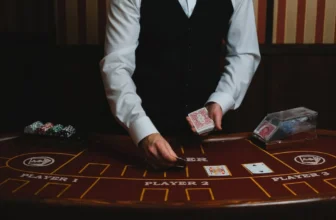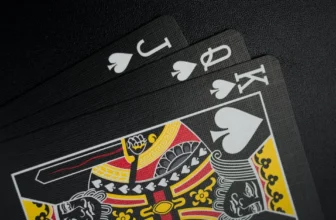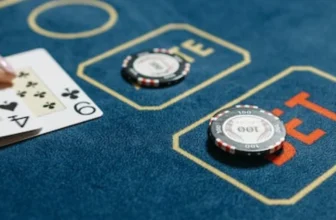
As a beginner, stepping into the world of casinos can be quite daunting, especially when it comes to mastering different game’ rules. One game that has maintained its popularity throughout the ages is roulette. You’ve no doubt seen it in movies, with the spinning wheel, the tiny ball, and the thrill of the win.
Roulette is a classic game of chance. It’s simple, elegant, and offers a wide variety of betting options. Whether you’re a novice or a seasoned player, the game never loses its appeal.
Read on to explore more about the exciting spinning wheel and familiarize yourself with this fascinating game’s ins and outs.
History of Roulette
To truly understand roulette, it’s worth taking a brief look at its history. The game’s origins are somewhat murky, but it’s generally agreed that the modern version of roulette originated in France in the 18th century. The word ‘roulette’ itself is French for ‘small wheel’, a nod to the game’s central feature.
Read More: Blackjack 101: A Comprehensive Guide to the Official Rules
Roulette quickly spread across Europe and eventually made its way to America. As it traveled, the game evolved, leading to the different versions we see today, including American, European, and French roulette. Despite these variations, the core roulette rules remained the same, making it a universally recognizable and loved game.
Understanding the Roulette Wheel
Now, let’s delve into one of the most iconic symbols of roulette – the wheel. A typical roulette wheel consists of numbered pockets ranging from 0 to 36. The American version includes an additional double zero (00). These pockets are alternately colored red and black, while the zeroes are usually green.
The numbers on the wheel are not arranged in sequential order. This is to ensure a balance between high, low, even, and odd numbers. The layout may seem random, but it’s designed to make sure that the game remains fair and unpredictable.
Basic Rules of Roulette
Roulette rules are relatively straightforward. A game begins when the dealer (also known as the croupier) spins the wheel in one direction and launches a small ball in the opposite direction. As the wheel slows down, the ball settles into one of the numbered pockets. This number is the winner for that round.
Players can bet on a variety of outcomes, including the exact number, the color, whether the number will be odd or even, and more. The variety of betting options is part of what makes roulette so exciting and versatile.
How to Play Roulette: Step-by-Step Guide
For those wondering how to play roulette, let’s break it down step by step.
- Buy Chips: First, you’ll need to purchase chips from the dealer. Unlike other casino games, roulette uses special chips that aren’t marked with a denomination.
- Place Your Bets: Once you have your chips, you can place your bets. You can bet on a single number, a group of numbers, or broader categories like red or black, odd or even.
- The Spin: After all bets are placed, the dealer spins the wheel and throws in the ball. This is the most exciting part – the anticipation of where the ball will land!
- Determine the Winner: Once the ball settles into a pocket, the dealer announces the winning number. If your bet matches the outcome, you win!
Betting in Roulette: A Beginner’s Guide
Understanding betting is crucial to mastering roulette. The game offers a wide range of betting options, each with its own odds and payouts.
There are two main categories of bets in roulette: inside bets and outside bets. Inside bets are placed on specific numbers or small groups of numbers, while outside bets cover larger groups of numbers or certain characteristics (like red/black or odd/even).
Each type of bet offers different potential returns. Generally, the more specific your bet, the higher the payout if you win, but the lower the chances of winning. This trade-off between risk and reward is a fundamental aspect of roulette strategy.
Strategies for Playing Roulette
Even though roulette is a game of chance, there are strategies you can use to maximize your chances of winning.
One popular strategy is the Martingale System, where you double your bet after each loss, so a win would recover all previous losses plus win a profit equal to the original stake. Another strategy is the Paroli System, a positive betting progression system where you double your bet after each win.
Remember, though, that no strategy can guarantee a win. Roulette is ultimately a game of luck, and it’s important to play responsibly and for fun.
Common Myths About Roulette
As with any casino game, there are many myths and misconceptions about roulette. Some people believe that previous spins can predict future outcomes, or that certain numbers are ‘due’ to come up. However, roulette is a game of independent events, meaning that each spin is separate from the last.
Another myth is that all roulette games are the same. As we’ve seen, there are different versions of the game, each with its own rules and house edges. It’s important to understand these differences before you start to play.
Tips and Tricks for Beginners
If you’re just starting with roulette, here are a few tips to keep in mind:
Learn the Rules: Before you start playing, take the time to learn the rules and understand the different bets.
Start with Outside Bets: As a beginner, it might be wise to start with outside bets. They offer lower payouts, but your chances of winning are much higher.
Manage Your Money: Set a budget for your gameplay and stick to it. Never gamble with money you can’t afford to lose.
Getting Started Playing
Roulette is a captivating and timeless casino game that offers fun and excitement for players of all levels. With its simple rules and wide range of betting options, it’s no wonder that roulette continues to be a favorite among casino-goers.
Learning how to play roulette can be a thrilling experience. So why wait? Take a seat at the table, place your bets, and let the wheel spin. Who knows? Lady Luck might just be on your side.
Remember, the goal of playing roulette, like any casino game, should be to have fun. Winning is just a bonus!







